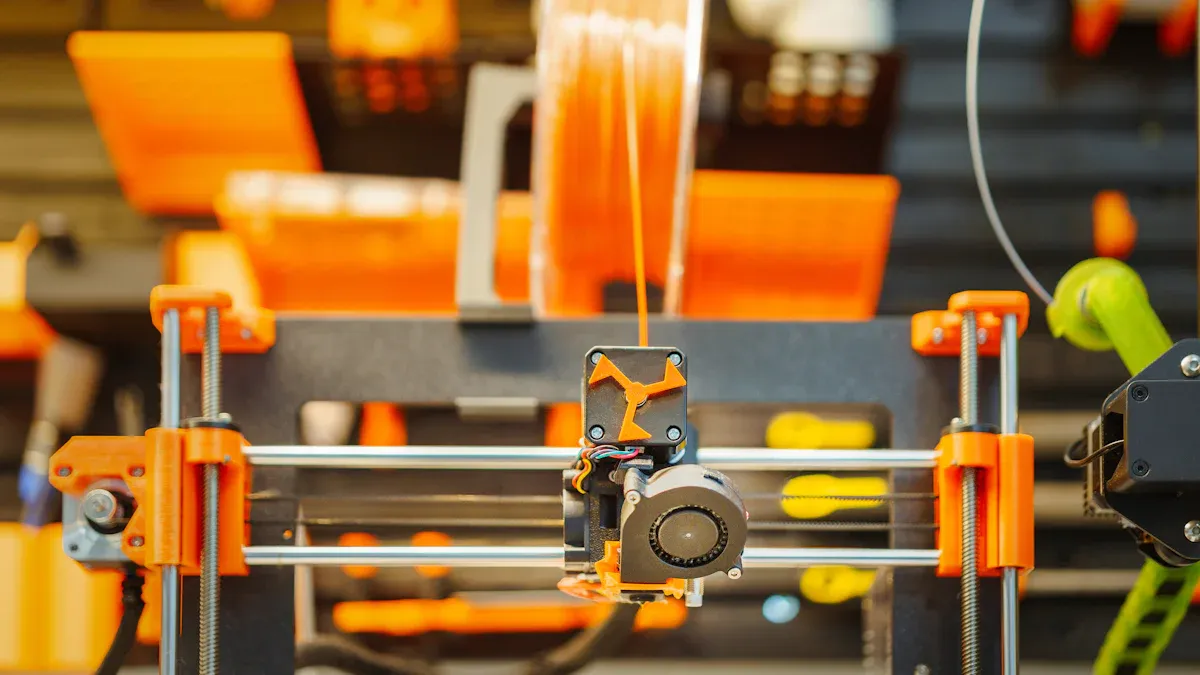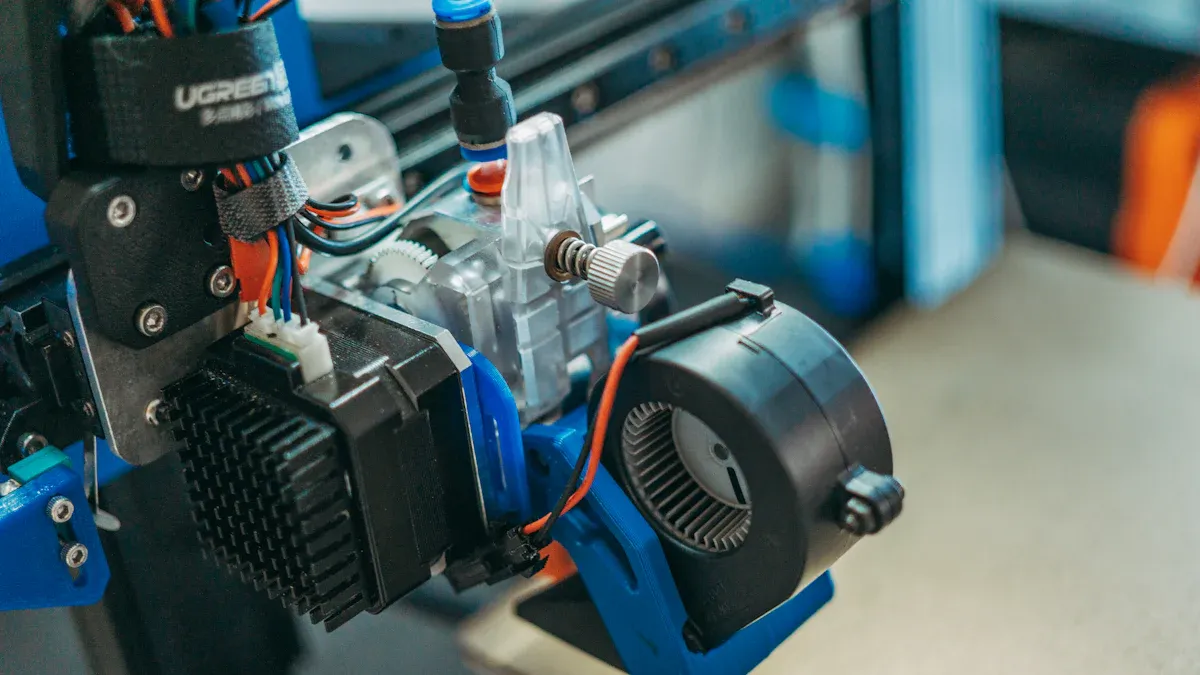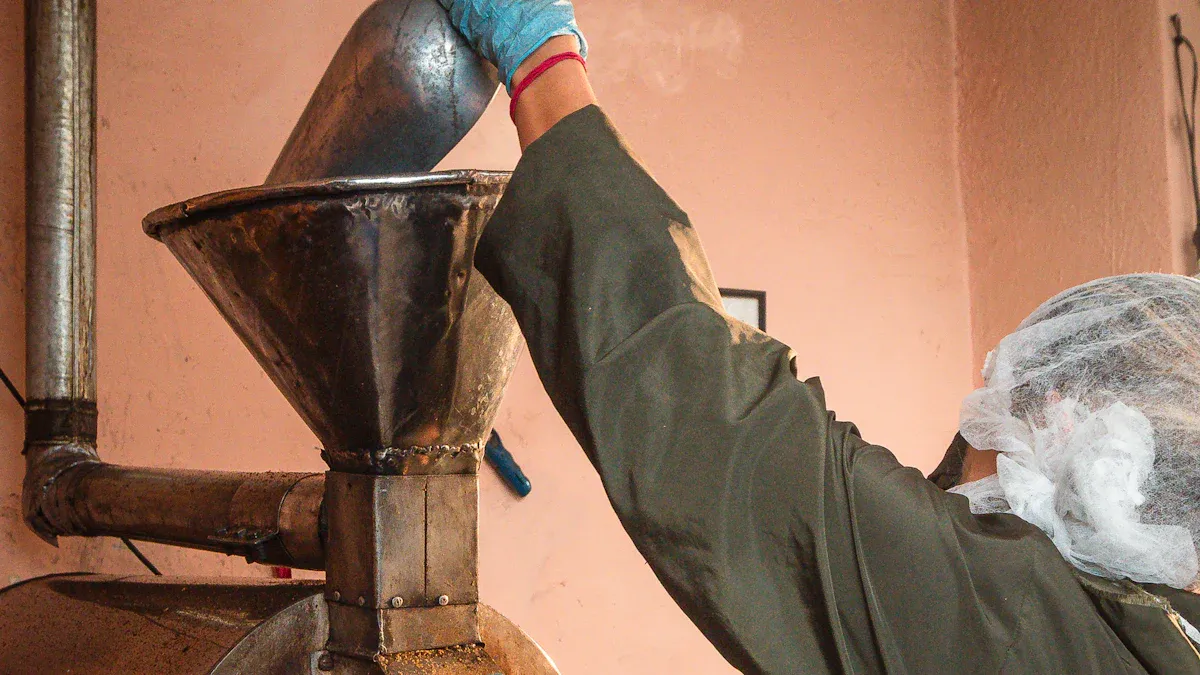
Twin screw extruders play a vital role in manufacturing processes, especially in plastics and rubber production. Regular maintenance of the twin screw extruder is essential to keep these machines running smoothly. Checking components such as the plastic extruder screw for wear, aligning the twin screw extruder parts barrel, and monitoring pressure controls ensure consistent output. These practices extend the life of the equipment, including the plastic extrusion machine screw, and minimize downtime, saving time and money for operators.
Key Maintenance Practices for Twin Screw Extruders

Regular Cleaning and Material Purging
Keeping a twin screw extruder clean is essential for maintaining its performance. Residual material can lead to contamination, affecting product quality. Regular purging with clean resin or specialized purge materials helps remove contaminants like gels and additives. Here are some effective cleaning practices:
- Flush the system with clean resin or purge material to clear out residues.
- Use purge resins to eliminate stubborn contaminants.
- Consider advanced techniques like disco purging for thorough cleaning.
Understanding how purge materials work can make the cleaning process more efficient. A clean extruder not only ensures consistent output but also extends the machine’s lifespan.
Proper Lubrication of Moving Parts
Lubrication plays a critical role in keeping the moving parts of a twin screw extruder in top condition. Without proper lubrication, friction increases, leading to wear and tear. High-quality lubricants reduce friction, extend the life of components, and improve overall efficiency.
| Advantage | Description |
|---|---|
| Slippery | Results in less friction |
| Longevity | Extends the life of gears, bearings, and seals |
| Temperature | Lowers gear operating temperature and noise |
| Viscosity | Maintains viscosity despite machine shearing |
| High Temp | Retains high viscosity at elevated temperatures |
Regularly checking and replenishing lubricants ensures the extruder operates smoothly, even under demanding conditions.
Routine Inspections for Wear and Tear
Routine inspections are vital for identifying potential issues before they escalate. Checking for wear and tear on components like screws and barrels can prevent costly repairs and downtime. Inspections also help maintain consistent product quality.
| Benefit | Description |
|---|---|
| Wear and Tear Monitoring | Timely identification of wear levels prevents production issues. |
| Cost Reduction | Reduces cleaning material usage and costs during color changes. |
| Labor Efficiency | Simplifies maintenance, shortens downtime, and reduces labor intensity. |
By scheduling regular inspections, operators can address minor issues early, ensuring the twin screw extruder remains reliable and efficient.
Monitoring and Replacing Seals and Bearings
Seals and bearings are critical components that require close attention. Worn-out seals can lead to leaks, while damaged bearings can cause friction and reduce efficiency. Monitoring these parts and replacing them when necessary ensures the extruder operates at peak performance.
- Regular checks prevent premature wear and friction.
- Replacing damaged seals and bearings maintains efficiency and product quality.
- Proper maintenance extends the lifespan of the extruder.
By prioritizing these components, operators can avoid unexpected breakdowns and maintain consistent output quality.
Solving Common Problems in Twin Screw Extruders
Addressing Overheating Issues
Overheating can disrupt the performance of a twin screw extruder and even damage sensitive materials. Managing barrel temperature and pressure is key to preventing this issue. Operators should regularly monitor the temperature profile and ensure the cooling system is functioning properly.
- A direct relationship exists between pressure and temperature rise. For every 2-bar increase in pressure, the temperature rises by 1°C. Keeping pressure stable helps control overheating.
- Installing pressure-generating devices, like gear pumps, can stabilize pressure and manage melt temperature effectively.
- The short residence time in twin screw extruders minimizes exposure to high temperatures, which is especially beneficial for heat-sensitive materials.
By addressing overheating, operators can maintain consistent product quality and avoid unnecessary downtime.
Preventing Screw Wear and Damage
Screw wear is a common issue that affects the efficiency of twin screw extruders. Regular inspections and the use of wear-resistant materials can help prevent this problem. Here are some practical tips:
- Inspect screws and barrels frequently to identify early signs of wear.
- Use high-quality, wear-resistant materials for screws and barrels to extend their lifespan.
- Ensure uniform particle size during material feeding to reduce abrasive wear.
Preventing screw wear not only maintains throughput but also ensures consistent product quality over time.
Troubleshooting Material Build-Up
Material build-up inside the extruder can lead to inconsistent output and reduced efficiency. Effective troubleshooting can significantly improve processing outcomes.
Managing the temperature profile is crucial. Adjusting temperature setpoints softens the resin, improving dispersive mixing and preventing material degradation. Additionally, optimizing screw design allows better control over melt viscosity, which enhances mixing efficiency.
Operators should also regularly purge the extruder to remove residual material. This practice minimizes contamination and ensures smooth operation.
Resolving Inconsistent Output Quality
Inconsistent output quality can result in wasted materials and increased costs. Addressing this issue requires a focus on quality control and real-time monitoring.
- A manufacturer who integrated a Model Predictive Control (MPC) system with their twin screw extruder saw a 15% increase in throughput and a 10% reduction in off-spec material.
- Another company installed an in-line rheometer to monitor viscosity fluctuations. By adjusting screw speed and temperature profiles based on real-time data, they reduced batch rejection rates by 25%.
These examples highlight how resolving output inconsistencies can enhance product performance and reduce waste.
Optimization Tips for Twin Screw Extruders

Fine-Tuning Temperature Control
Temperature control is a game-changer for optimizing the performance of a twin screw extruder. Adjusting the temperature in specific zones can improve material melting and reduce wear on components. For instance:
- Setting zones 1 and 2 to higher temperatures decreases wear on plasticating screw elements. This adjustment allows materials to melt more efficiently, reducing the need for mechanical energy.
- Studies by Maridass and Gupta, as well as Ulitzsch et al., highlight how optimizing barrel temperature enhances material properties and process outcomes.
Additionally, maintaining lower discharge pressures can stabilize melt temperatures. This approach minimizes wear on discharge screws and boosts thermal stability, ensuring consistent operation.
Improving Material Feeding and Handling
Efficient material feeding and handling directly impact the extruder’s throughput and energy consumption. Companies have achieved remarkable results by optimizing these processes:
- A processor of glass fiber-reinforced polymers increased throughput by 18% by integrating a side feeder and modifying the screw design.
- Throughput rose from 2000 kg/hr to 2300 kg/hr, generating an additional $180,000 in annual profit.
- Energy savings of 5% (or 138 MWh/yr) were achieved due to a higher degree of fill in the extruder.
These improvements not only enhance operational efficiency but also reduce costs, making them a win-win for manufacturers.
Adjusting Screw Configuration for Specific Applications
Customizing the screw configuration can significantly improve performance for different materials and applications. Key adjustments include:
- Modifying the channel depth to optimize the compression ratio for thermoplastics.
- Increasing the screw length-to-diameter (L/D) ratio to enhance mixing and melting efficiency.
- Incorporating spiral elements or Maddock mixers for better blending and temperature control.
- Adjusting the helix angle and pitch to ensure efficient material flow.
- Using barrier screws to separate melted and unmelted materials, improving consistency.
These adjustments allow operators to tailor the extruder to specific needs, ensuring optimal results.
Enhancing Process Efficiency Through Automation
Automation has revolutionized the way twin screw extruders operate. Advanced systems equipped with sensors and real-time monitoring reduce the need for manual intervention. Predictive maintenance features minimize downtime and improve reliability.
Artificial Intelligence (AI) takes automation a step further by optimizing extrusion parameters and material flow. This leads to reduced waste, better quality control, and overall enhanced efficiency. Manufacturers adopting automation see significant improvements in productivity and cost savings, making it a valuable investment.
Preventative Measures for Twin Screw Extruders
Implementing Routine Maintenance Schedules
Routine maintenance schedules are the backbone of preventative care for twin screw extruders. Regular upkeep ensures machines run smoothly and avoid unexpected breakdowns. Operators can plan maintenance intervals based on historical data, replacing or refurbishing components before they fail.
Tip: A structured maintenance program not only prevents downtime but also extends the lifespan of the equipment.
Here’s what industry studies reveal about the benefits of routine maintenance:
| Benefit | Description |
|---|---|
| Performance Optimization | Regular maintenance ensures peak performance through proper alignment and lubrication of components. |
| Preventing Downtime | Scheduled maintenance minimizes unexpected breakdowns, allowing for planned production disruptions. |
| Cost Savings | Routine checks can prevent small issues from becoming major problems, saving on repair costs. |
| Safety | Timely maintenance reduces safety hazards for machine operators by addressing worn or damaged parts. |
| Lifespan Extension | Consistent upkeep can significantly extend the operational life of the extruder, protecting investments. |
| Product Quality | Well-maintained machines produce higher-quality products by preventing impurities in processed materials. |
| Energy Efficiency | Regular checks optimize components for better energy consumption, reducing operational costs. |
By sticking to a maintenance schedule, operators can avoid costly repairs and keep production running efficiently.
Training Operators on Best Practices
Operators play a key role in maintaining twin screw extruders. Training them on best practices ensures they understand how to handle the equipment properly. Educated operators can identify early signs of wear and address minor issues before they escalate.
Note: Training programs should cover routine inspections, lubrication techniques, and troubleshooting common problems.
When operators know the ins and outs of the machine, they can perform timely repairs and replacements, reducing downtime and improving productivity.
Keeping Spare Parts Inventory Ready
Having spare parts on hand is a lifesaver during unexpected situations. Worn-out seals, bearings, or screws can halt production if replacements aren’t readily available. Keeping an inventory of essential components ensures quick fixes and minimizes downtime.
- Stock critical parts like screws, barrels, and seals.
- Monitor wear levels to anticipate replacement needs.
- Partner with reliable suppliers to ensure quality and availability.
A well-stocked inventory keeps operations running smoothly and prevents costly delays.
Using High-Quality Materials and Components
High-quality materials are the foundation of reliable twin screw extruders. Components made from durable materials like nitriding steel enhance performance and reduce maintenance needs. Advanced manufacturing techniques, such as quenching and nitriding, further improve the longevity of parts.
Investing in premium materials pays off in the long run. Manufacturers experience fewer breakdowns, lower maintenance costs, and consistent performance.
By prioritizing quality, operators protect their investment and enjoy better ROI through reduced operational expenses and downtime.
Regular maintenance keeps twin screw extruders running smoothly. Proactive care reduces downtime, extends equipment life, and ensures consistent product quality. Operators who follow these tips can maximize performance and avoid costly repairs.
Tip: Start small. Create a maintenance schedule and train your team. These steps make a big difference in the long run!
FAQ
What is the best way to clean a twin screw extruder?
Purging with a suitable resin or purge material works best. It removes residue and prevents contamination, ensuring consistent performance and product quality.
How often should routine maintenance be performed?
Operators should follow the manufacturer’s recommendations. Typically, routine maintenance for a twin screw extruder should occur every 500-1,000 operating hours.
What causes screw wear in a twin screw extruder?
Screw wear often results from abrasive materials, high operating temperatures, or improper lubrication. Regular inspections and using wear-resistant materials can help reduce this issue.
Post time: May-29-2025
